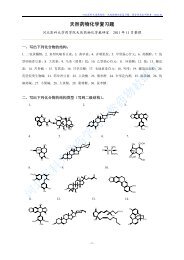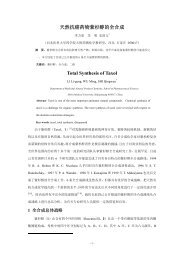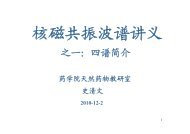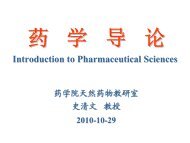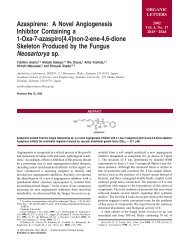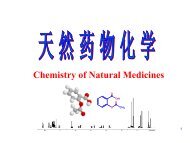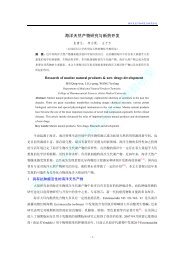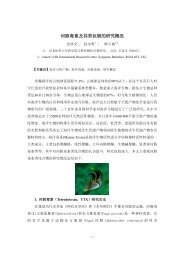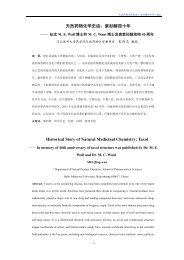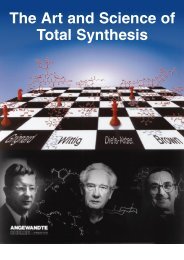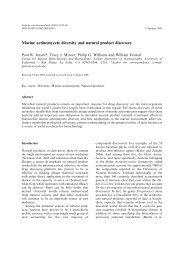Total Synthesis Highlights
Total Synthesis Highlights
Total Synthesis Highlights
You also want an ePaper? Increase the reach of your titles
YUMPU automatically turns print PDFs into web optimized ePapers that Google loves.
3:1 mixture. That 1 was the major diastereomer followed from its conversion to 3. The<br />
configuration of the minor diastereromer was not noted. Exposure of 1 to nucleophilic azide then<br />
gave the easily-purified 2.<br />
The spirodiepoxide 1 is an intriguing new approach to relative and absolute stereocontrol. It will<br />
be interesting to see what other nucleophiles can be used in the opening. It is possible that a chiral<br />
oxygen transfer reagent, such as the dioxirane prepared by the Shi protocol, would convert 12 to 1<br />
with improved diastereoselectivity (double diastereoselection)<br />
68. Enantioselective <strong>Synthesis</strong> of the Polyene Antiobiotic Aglycone Rimocidinolide Methyl<br />
Ester<br />
The complex polyene macrolide antibiotics are clinically effective as antifungal agents. Scott<br />
Rychnovsky of the University of California at Irvine has reported (Angew. Chem. Int. Ed. 2004, 43,<br />
2822. ) the first synthesis of rimocidinolide methyl ester (4), the aglycone of rimocidin (1). The<br />
key step in the synthesis is the condensation of the aldehyde 2 with the phosphonate 3, leading to<br />
4.<br />
Preparation of the Aldehyde 2: The absolute configuration of the triene aldehyde 2 was set by<br />
Noyori hydrogenation of ethyl butyrylacetate 5. Silylation and Dibal reduction then gave the<br />
aldehyde 6. Reduction of the homologated ester gave the alcohol, which was oxidized to the



